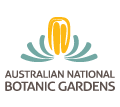 |
Australian National Botanic Gardens
Growing, studying and promoting Australian plants |
 |
| |
GPO Box 1777
Canberra ACT 2601
AUSTRALIA |
Telephone (02) 6250 9546
Facsimile (02) 62509599
Media enquiries:
Paul Ziesing (M) 0418 955 661 |
|
NEWS RELEASE
31 March 2010
See the world’s smallest flowering plant
The Australian National Botanic Gardens is full of surprises this autumn – including the world’s smallest flowering plant, tiny duckweed.
Gardens’ communication officer Paul Ziesing said tiny duckweed was a floating water plant that occurred in freshwater dams and waterholes, and the Botanic Gardens’ ponds.
“Tiny duckweed plants usually reproduce by budding off new plants, and flowers are only very rarely produced,” Paul said.
“Staff member Dave Mallinson recently discovered the flowering plants after careful observation over a number of months.
“The flowers of tiny duckweed are too small to see with the naked eye - a dozen will fit on the head of a pin.”
The Visitor Centre has a small container with tiny duckweed for members of the public to view. Visitors can also find tiny duckweed in a small pond near the Sydney Region Flora section, near the Eucalypt Lawn.
Tiny duckweed plants are bright green floating ovals, about one millimetre long, with no roots - about 80 per cent of each plant is submerged.
When flowering begins, an eye-shaped opening appears at the centre of each plant, and a round flat-topped column emerges at one end of the opening, along with a round or oval shaped structure which bears the pollen.
Botanist George Bentham first described tiny duckweed, or Wolffia australiana in 1878, after famous botanist Ferdinand von Mueller collected plant material at Emu Creek in Victoria.
Because of its small size tiny duckweed is often overlooked or mistaken for other, larger, species of duckweed. However, it is widespread in south-eastern Australia and New Zealand, often occurring in farm dams and other small waterholes - even stock watering troughs.
Media contact: Paul Ziesing 0449 709 840
Note to media: Electron microscope photographs of flowers and fruit are available for publication.

